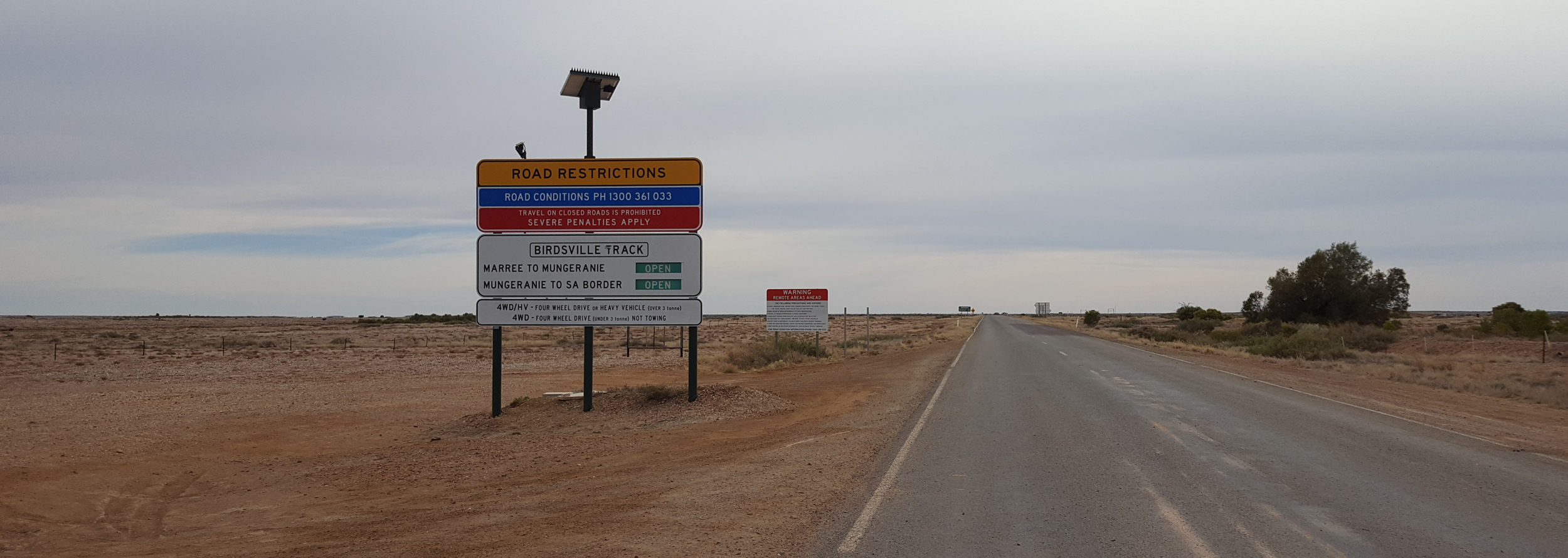Prologue
In September 2016 I had some time booked for a birding trip to the South Australian outback. Paul Coddington and I planned to do the Strzlecki Track, in the far NE of South Australia, which has an excellent cast of high quality desert specialists, headed by the stunning Letter-winged Kite (for which Strzlecki is probably the most reliable place in the whole of Australia). The 2016 winter in Adelaide was one of the wettest in recent memory and the interior of the state also got a dousing, so much so that various of the tracks in the North and East were officially closed meaning our trip was touch and go for a month prior.
In retrospect the sensible thing would have been to plan a completely different itinerary, keeping the powder dry for another run some other time or year. Indeed Paul had done just this, suggesting a couple of fall-backs. Stubbornly – and wrongly as it turned out – I pushed us to head north, wanting to nail Short-tailed Grasswren in the Flinders Ranges once and for all (I had previously dipped on 3 occasions), and harbouring hopes that we would get lucky with the weather and the tracks would be open. On arrival in Lyndhurst I dared to hope – the weather had not been good but the Strzlecki was still officially open. However after another evening of rain, overnight it closed and we had to make our first forced reschedule. Up to Marree we went, again vainly hoping that Birdsville would have fared better. Indeed it had – just – and the track was still officially open. However there were ominous clouds ahead and the forecast suggested these were very widespread. Finally seeing sense, I agree with Paul that the risk of getting stranded was not worth taking. We beat a retreat south, held up for 3 hours a creek crossing south of Leigh Creek (where 5in of rain had fallen in an hour!), and trundled west instead to Lake Gilles, a large, remote stand of mallee off the Eyre Hwy that stretches 1700km from Port Augusta to Norseman in WA, and where a few WA birds find their eastern-most populations (Western Yellow Robin, Blue-breasted Fairywren and Rufous Treecreeper).
In the end we still had an excellent trip in which I picked up a number of SA ticks and even a few lifers (Short-tailed Grasswren and Crimson Chat in the Flinders, Blue-breasted Fairywren in Lake Gilles), and we dubbed the trip the “Two Grasswren Tour” for our success in locating both the Short-tailed and also Western at both Whyalla Conservation Park and on the Iron Knob road. But I had still to taste what arguably is the true outback, off the bitumen, into the desert, where life is on the edge and various very special birds live.
Several weeks before our planned 2017 trip, word came through on the local birding Facebook feed that a pair of Letter-winged Kites had been found on the Adelaide plains north of the city. This is not unprecedented – a small colony established near Port Wakefield in 2014 in response to a local plague of mice – and the plains this year were indeed again in the grip of a mouse plague that resulted in a breeding bonanza for raptors with Spotted Harriers, Black-shouldered Kites, Kestrels and even Little Ravens all cashing in on the glut of food. Even so, LWK more traditionally breed in the arid interior and thus a fantastic opportunity was presented to twitch these stunning and rare birds on a quiet track about 1 hour north of Adelaide.
A couple of days later, Paul too, saw one of the LWKs in appalling conditions with high winds and battering rain. It was devastating to learn that just a few days after that, probably in response to the horrendous weather, both LWK had departed leaving their tiny chicks to starve in the nest.
As a result of this unexpected twitch we turned our attention to the Birdsville Track, which like the Strz links outback SA with far western Qld, but in a more northerly direction. The Birdsville holds a similar array of desert species with the addition of 4 species that are much harder (though not impossible) on the Strzlecki: Flock Bronzewing, Yellow Chat, Grey Grasswren and another rare raptor of the interior, Grey Falcon, known to local birders as the Grey Ghost.
Day 1, Adelaide to Lyndhurst
We had planned to leave pre-dawn to get to Port Augusta by 7.30ish, but at the last minute I was needed to drive the kids to school, so it was 8.45 before we could get underway, and 12.30 by the time we got to Port Augusta with the least interesting part of the drive under our belts. We still had plenty of time to reach our first camping spot, Lyndhurst abut 600km north of Adelaide, though we now had much less time up our sleeves for birding en route.
We stopped for a spot of lunch at the excellent Arid Lands Botanical Garden just outside Port Augusta. We were checking out a report of Black Honeyeater from a few days before, but in less-than-ideal, cool and blustery conditions we saw very few birds and certainly no BH (which would be a state tick for me). Pick of the bunch was – somewhat bizarrely – a Buff-banded Rail.
From Port Augusta the road winds scenically up through the Flinders Ranges, crossing River Redgum lined creek beds and fields of scattered Blue-bush with the occasional lonely ruin a reminder of the harsh lifestyle for the early settlers. Beyond Hawker we stopped at a spot recommended to us by birding mate Chris Steeles. Our late departure meant we had very little time to spare here, but we did get the trip off to a good start with a few White-winged Fairywrens and a very smart male Orange Chat – only my second ever. Little did we know this would be one of the commonest birds of the trip.
In 2016 the road leading from Parachilna east to the gorge had provided me Paul with some outstanding birding, with several (lifer) Crimson Chats, flocks of Budgies and Black-faced Woodswallows, at least 2 Pied Honeyeaters and ubiquitous White-winged Fairywrens. Today we drove the road slowly hoping for more of the same, looking and listening for any avian activity, but it was much quieter today. A flock of Zebra Finches burst from the track-side after a couple of km, and we stopped to investigate, finding not only the Zebbies, but several more Orange Chat. In the end we realized there were at least 60 Orange Chat here, as well as a few Black-faced Woodswallow.
Pretty soon though, it was time to press on to make Lyndhurst before nightfall. We rolled into the pub car-park at 5.30 with enough time to set camp (me in swag: 2min worth or unclipping and rolling out; Paul in his 1980s tent taking rather more effort. I may have mentioned Swallows and Amazons at one point…). Back in the Kluger we drove the short distance to the airstrip. A year earlier I drove nervously around the very wet and muddy area, avoided getting bogged, and we found 5 gorgeous Inland Dotterel in the car headlights. We did not, however manage any photos and we were hoping to rectify that tonight. Sadly, we spent 2 hours pre- and post-sunset finding an Australian Pipit and not much else.
Back at the pub the publican confirmed that very few people were seeing dotterels at the airstrip this year. It had not been an auspicious start to the trip, and we consoled ourselves with watching the first half of the Qualifying Final between Richmond and Geelong, sucked a few Coopers Pale, and devoured a monster rump steak each.
Day 2, Lyndhurst to Mungerannie
At dawn we packed up as quickly as possible and drove the mere 30km north to the ruined town of Farina where there is a beautiful, rustic campsite, and made some breakfast. Had we not been spotlighting at the airstrip in Lyndhurst the night before we surely would have stayed here instead.
Waiting for the kettle to boil, a familiar repeated single note drew my attention and I looked up to see a gorgeous Red-backed Kingfisher had perched in a dead tree just opposite our picnic table. A few minutes later it was joined by a pair of dainty doves, my first lifers of the trip: Diamond Dove.
Farina campground is not only pretty, historic and birdy, it has also been host to a pair of Black-breasted Buzzards – another of the special outback raptors we hoped to connect with – for the last few years. We saw no sign as we arrived but with careful scanning Paul noticed a large nest by the creek-line. It appeared unoccupied, but we packed our breakfast things away and drove down to check it out. Peering with bins I was able to make out the barest hint of the head of a bird, and if we walked a bit further away up a small slope we could see unequivocally that there was a Black-breasted Buzzard brooding on the nest. This view, while tickable, was reminiscent of my initial, unsatisfactory view of Harpy Eagle in Venezuela. “I guess there’s a good chance the other bird is not far aw…”, I started to say when, mid-sentence, I landed bins on the other bird, less than 50m away on an open branch keeping vigil not far from the nest. I had seen BBB in NT on my brief road-trip to Uluru, but these were my first in SA.
Lots of roadkill, and consequently good numbers of Black Kites and Wedge-tailed Eagles, punctuated the next 50km to Marree where we refueled before hitting the famous Birdsville Track.
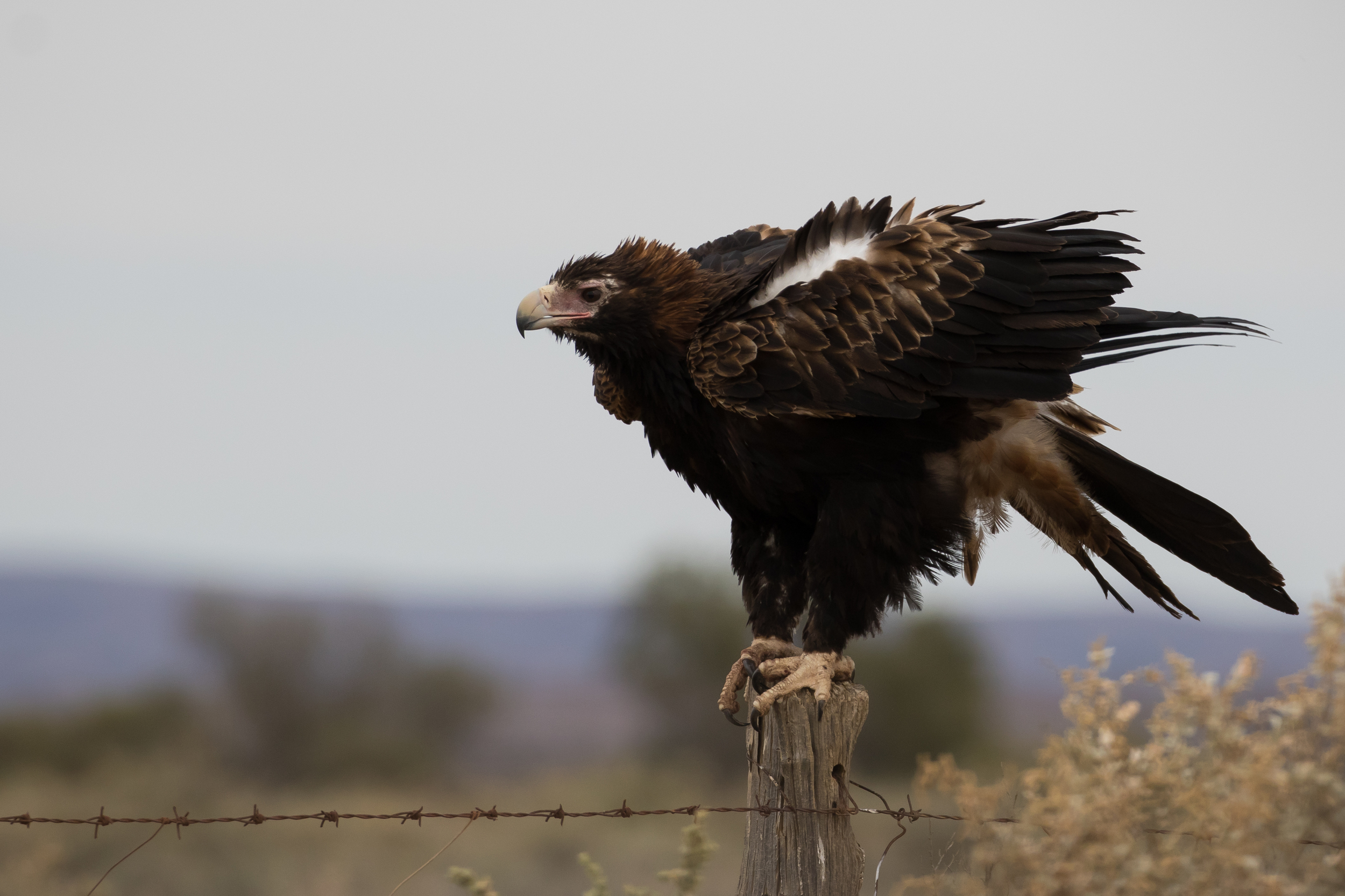
Our first stop, mid-morning, was at Clayton River where with some effort we tracked down my next lifer target, Red-browed Pardalote in one of the River Redgums that grow in the now dry, sandy creek bed. A pair of parrots proved elusive and we were unable to pin down an id until a few days later we realized these must’ve been Bluebonnets. More Diamond Doves and a small flock of Budgies in flight rounded out the species list before we were headed north once again.
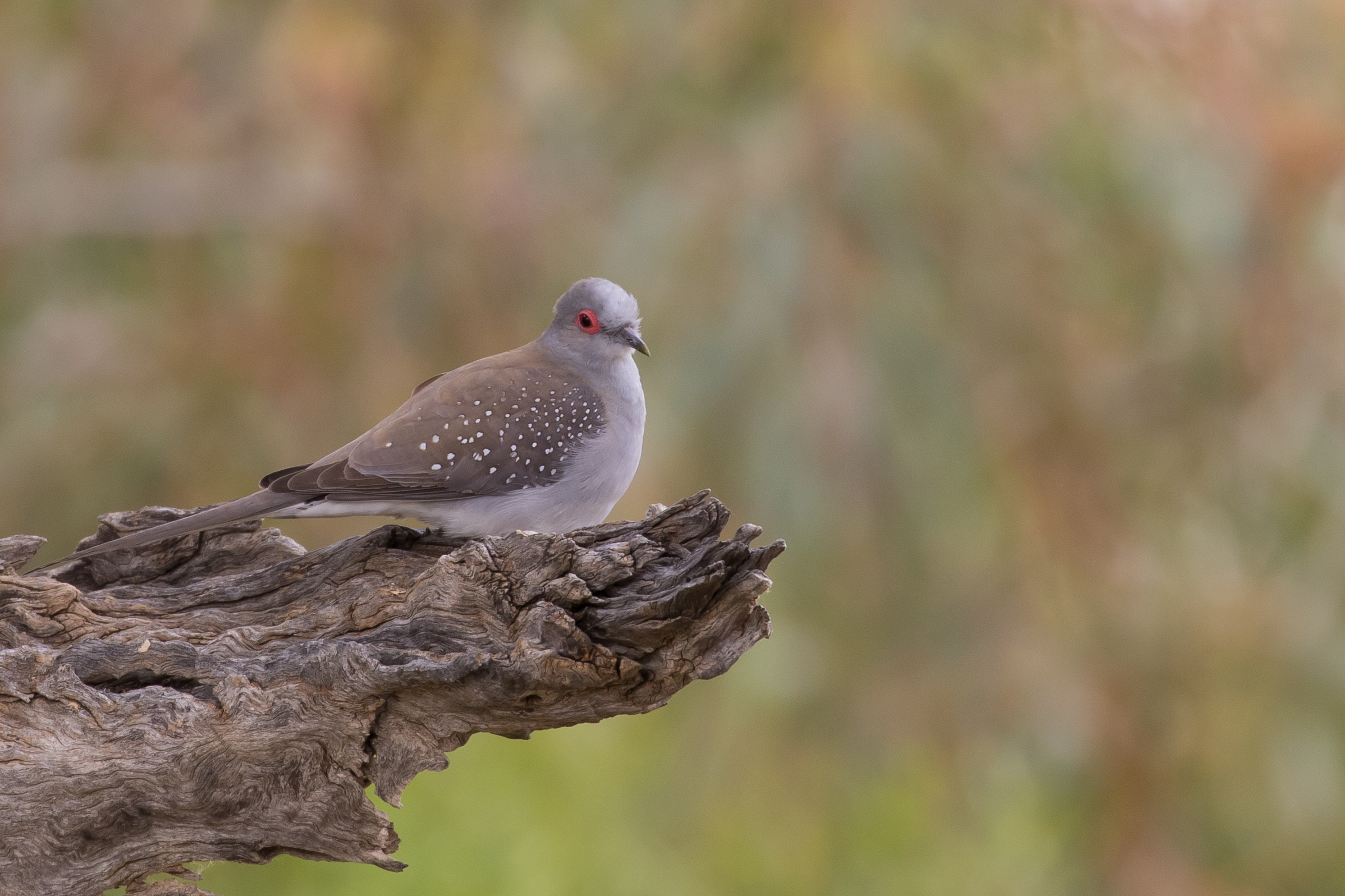
At a small dam a bit further north a large flock of several hundred Zebra Finches were taking advantage of the bore overflow to drink, and we sent some time trying to get nice photos of these common but stunning outback birds.
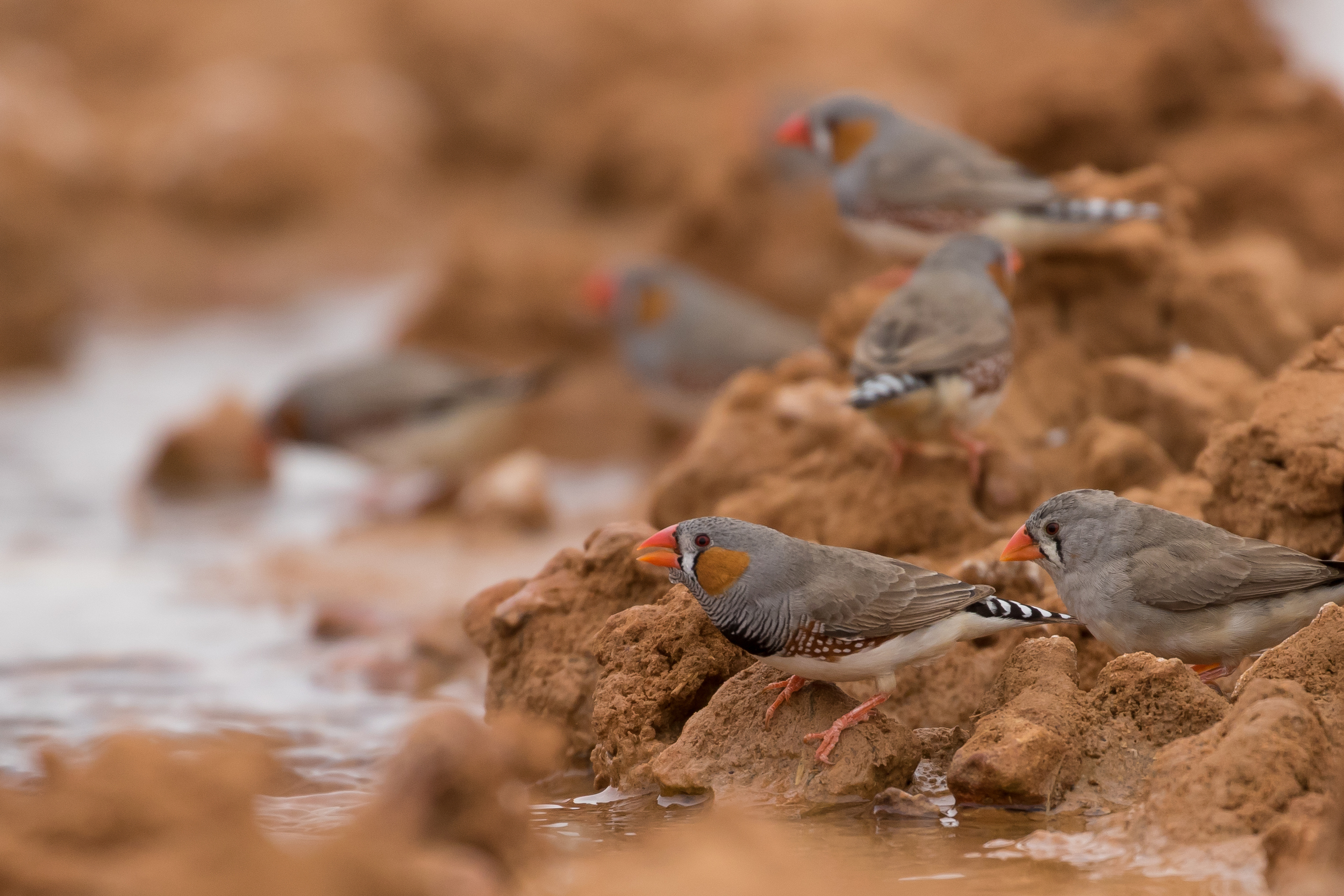
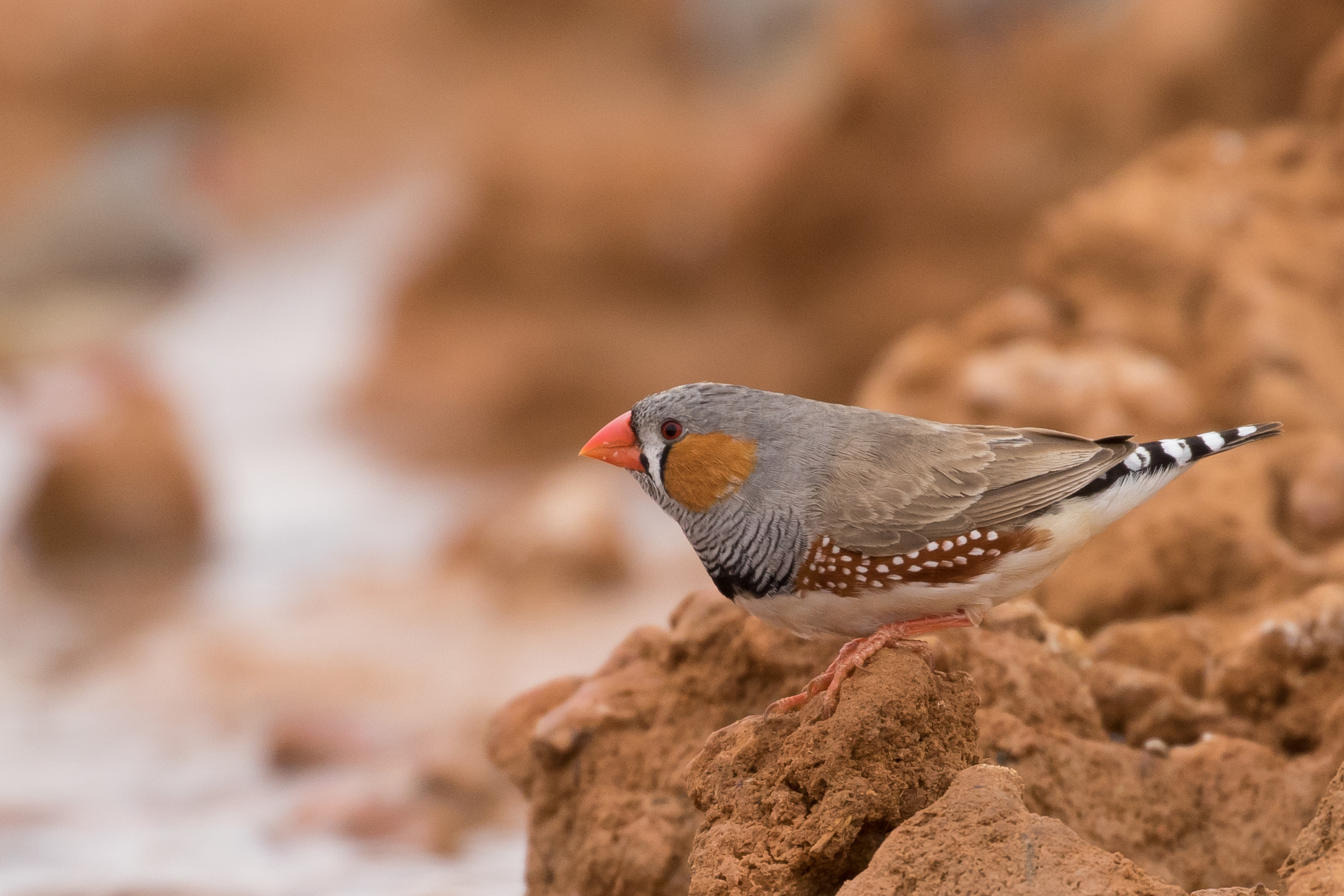
At Dulkninna Station a small marsh has formed from another bore overflow and here we found a number of species more familiar from Laratinga Wetlands near Adelaide, such as Freckled Duck and at least 3 very tame Spotted Crake. A group of birds huddled together on a dead tree over the water proved to be an Australian tick for me, White-breasted Woodswallow.
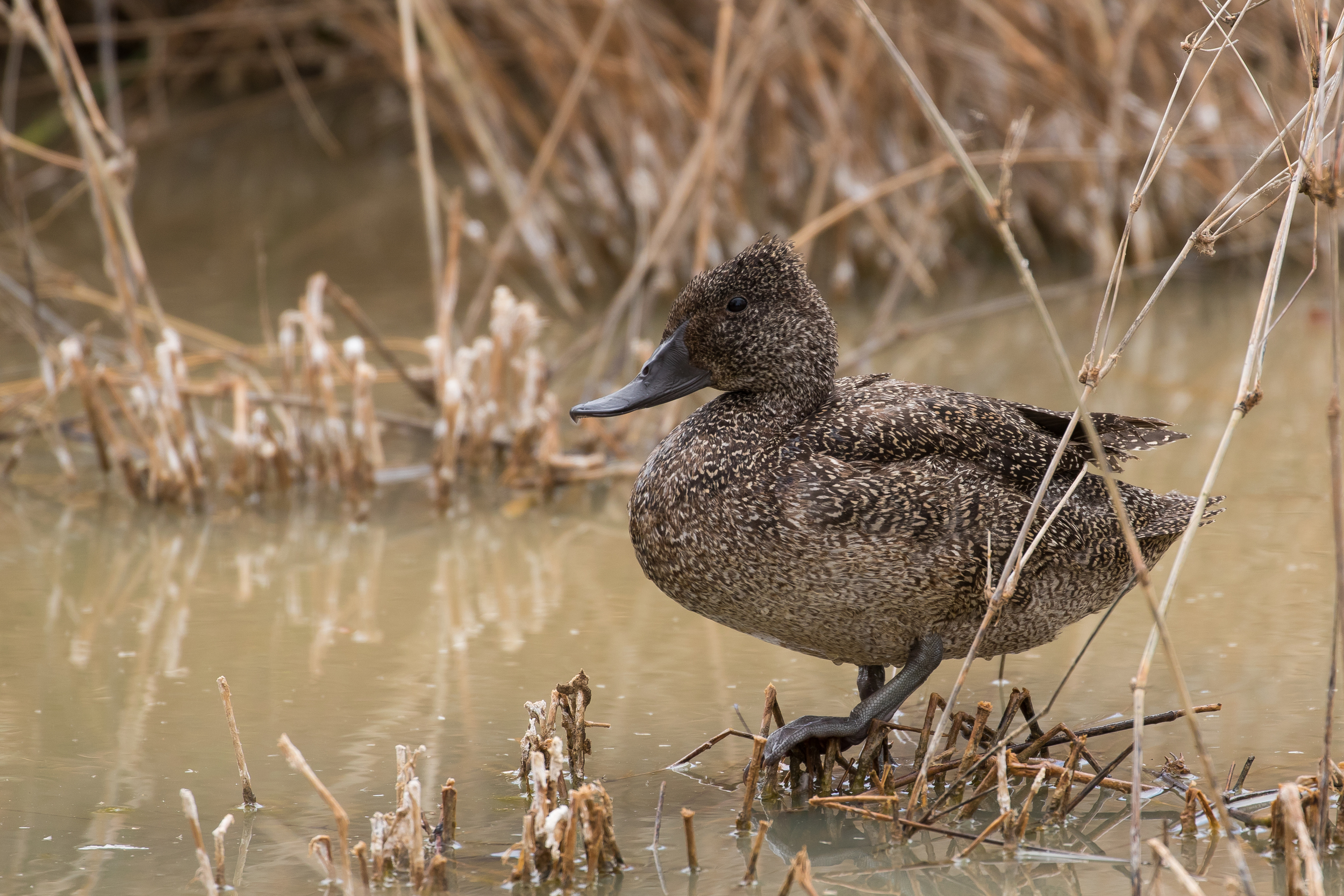
We had, unfortunately, now reached the part of the day when the birding slows down considerably. As we drove north another 100km or so, we wound the windows down and occasionally stopped whenever we saw corvids. Eventually one small party gave the characteristic rapid “Caw caw caw caw” of Little Crow, instead of the much commoner and lower, slower drawl of Australian Raven. This was a state tick for both of us.
We took a late lunch on the roadside a few km north of Cooper Crossing. This was a spot we decided might be good for Eyrean Grasswren, but before we had finished eating lunch a car trundled up and a familiar, goateed face leaned out of the window: “I thought we were seeing ya at Farina tonight?”. It was Dave and Sue Harper, with their English friend (and world birder and guide) Andy Walker, on the penultimate day of their trip north along the Stuart Highway and back on the Oodnadatta Track (see here for their excellent blog about that trip and others from their SA Big Year). Having cleaned up expectedly quickly near Marla and on the Oodnadatta, they had used their extra days to hit the Birdsville Track to get Andy a lifer Grey Falcon. As we chatted, a Chirruping Wedgebill pumped out its song and White-backed Swallows, one of my favourite birds, swooped over the dunes. After we’d chatted with David, Sue and Andy for 30mins or so – and gratefully noted down some gen – they bombed south and we headed off into the dunes about 100m away in search of our grasswren. As soon as we got to an area of suitable-looking canegrass I tried some playback and was immediately answered. What a promising start! But we couldn’t pin it down and were gradually led over a ridge and eventually had no further audible clues as to its whereabouts. At least we had a bunch of other sites to check out.
As we walked back, we split up somewhat and I looked over to see Paul focusing his camera on something. I raised my bins and was amazed to see an Eyrean Grasswren sat in the one on top of a fallen dead bush! I banged off two distant record shots and hussled down to Paul. Turns out, he’d been photographing a Wood-swallow in the tree behind, and had no idea that a grasswren had popped up to taunt him! I knew where this bird was, and with just a few seconds of playback it had popped back up to the same spot. It didn’t stay long enough for photos, but circled around us and now showed brilliantly on an exposed branch, tailed cocked and looking around with attitude as we both grabbed as many frames as we could. Though in retrospect the photos are bit disappointing, this was still a much better view than we had dared hope for before the trip.

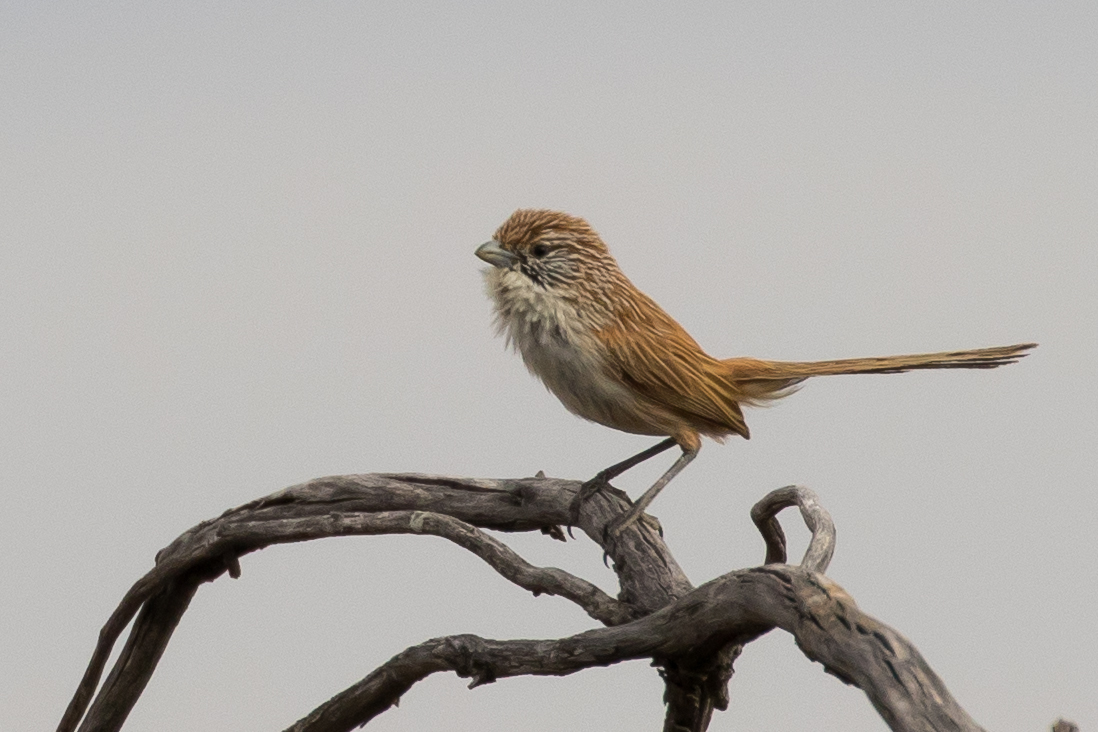
Well satisfied with our haul so far, we carried on north again. The Harpers and Andy had seen Grey Falcon the night before roosting on a comms tower south of Mungerannie, and so this became our final target for the day. We made our camp by the creek-line at the Mungerannie Roadhouse and hit the road again at about 5pm. We were aiming to be there by 5.20 when Dave had said the falcons had flown in to roost the previous night, so I was bombing along the track (which is in pretty good condition) at a fair lick when two dark birds shot across the bows. All I’d seen was a pair of dark, dumpy profiles, but these had to be Flock Bronzewings!! I stopped as quickly as I could and tried to get Paul onto them but they disappeared over the horizon before he could get identifiable views. Then just as we started driving again another pair bombed past which, once I’d stopped again, we followed in bins until they too dropped out of sight a long way off. Now I picked up yet another pair at much closer range and as I fired off some decidedly poor record shots, we both had our first unequivocal views in good light. Awesome to have these on the list because I am a huge fan of sandgrouse, and Flockies have the same ecological niche in Australia – indeed lovely black-and-white head pattern of the males hints at Lichtenstein’s!
We pulled up at the tower at almost exactly 5.20, but it was gusty and rather overcast. As far as we could see the birds had not arrived, so we walked up to the far side so we’d have the light behind us. From a slightly different angle I looked up again: “Shit – there’s a bird there!”. I hastily deployed the scope and sure enough, there was a Grey Falcon, tucked in behind the large north-facing dish. As we continued to watch we eventually realized that there were two birds present, the other even more tucked in away from the wind, presumably encouraged to roost earlier by the cool, blustery conditions.

We stayed to grab some digiscoped pics and video, then drove more sedately back to Mungerannie, enjoying a stunning sunset along the way.
Once back at our camp we fired up the camp stove, and chilled out after a very successful day. Facebook update from the unexpected Optus signal in Mungerannie:
Not a bad day in the outback up the Birdsville Track. 5 lifers including Grey Falcon, Flock Bronzewing and Eyrean Grasswren. Now got the swag set, sausages in the pan and glass of red wine. Sweet as a nut.
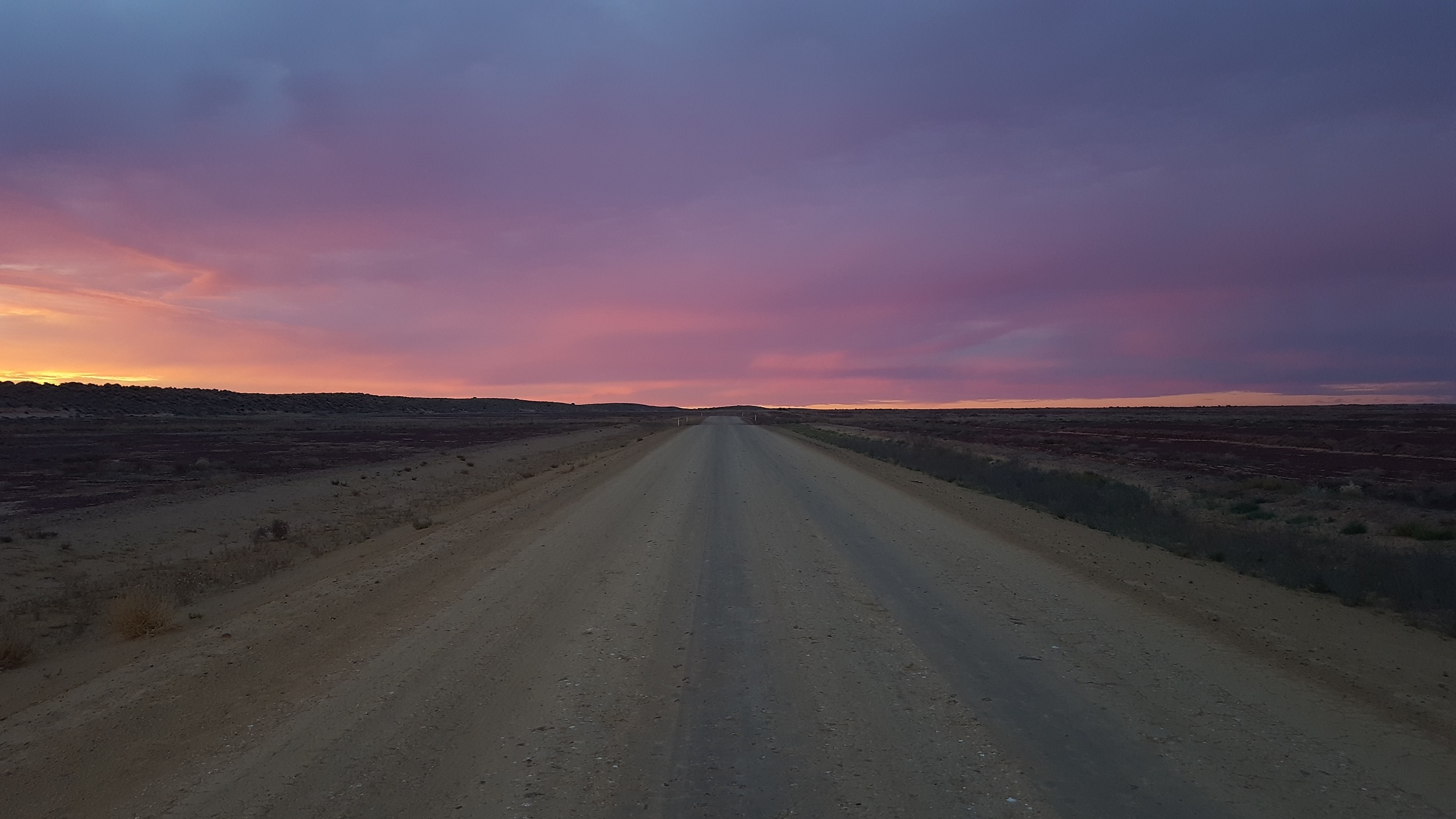
to be continued…

